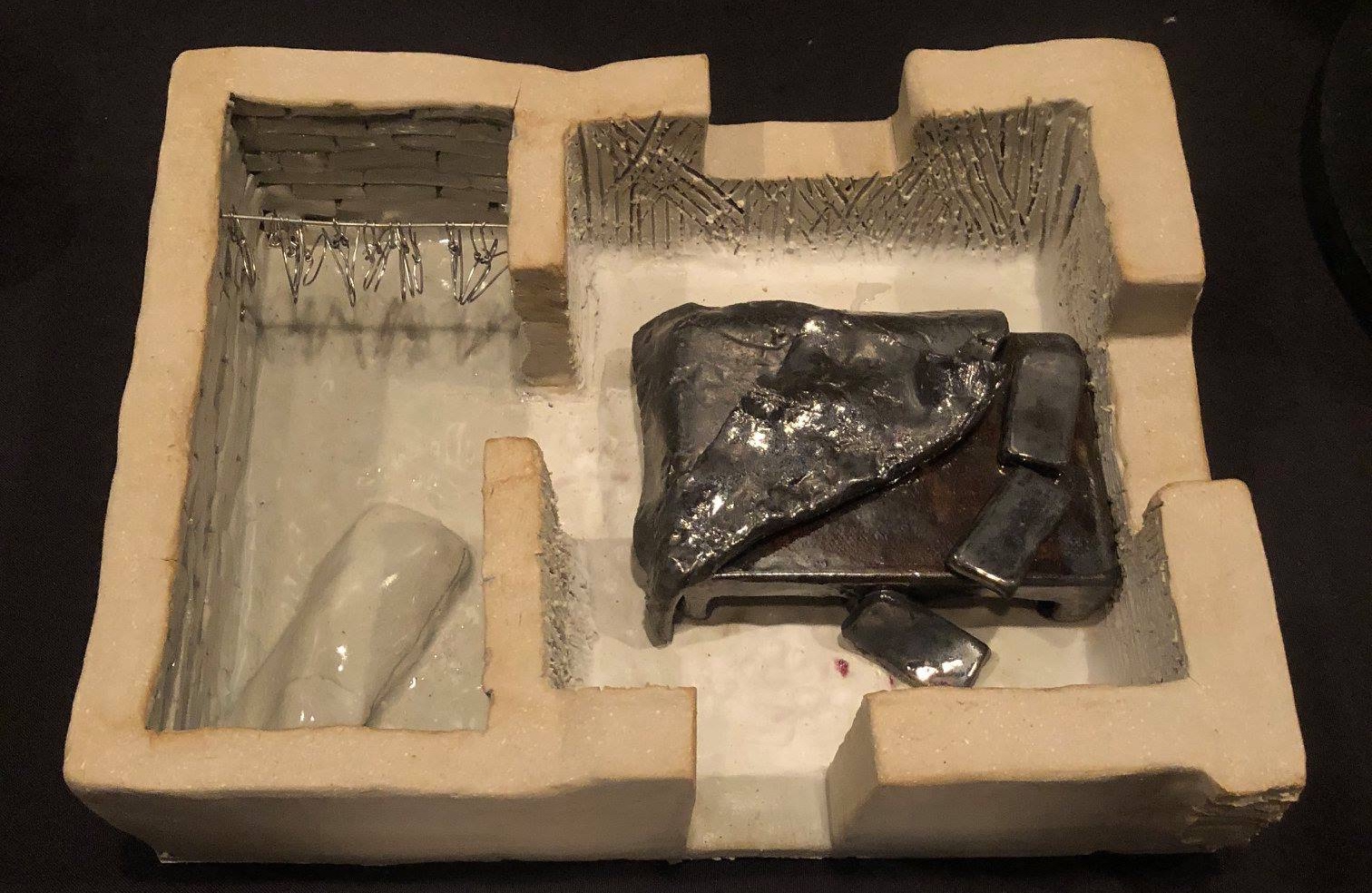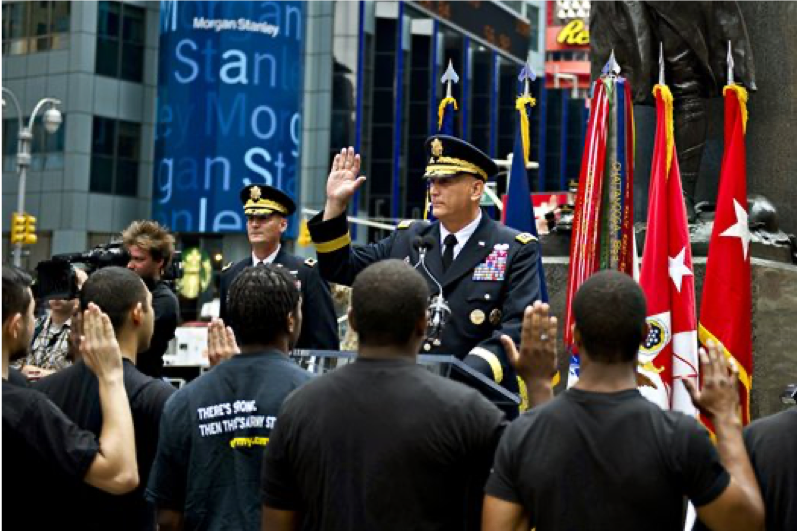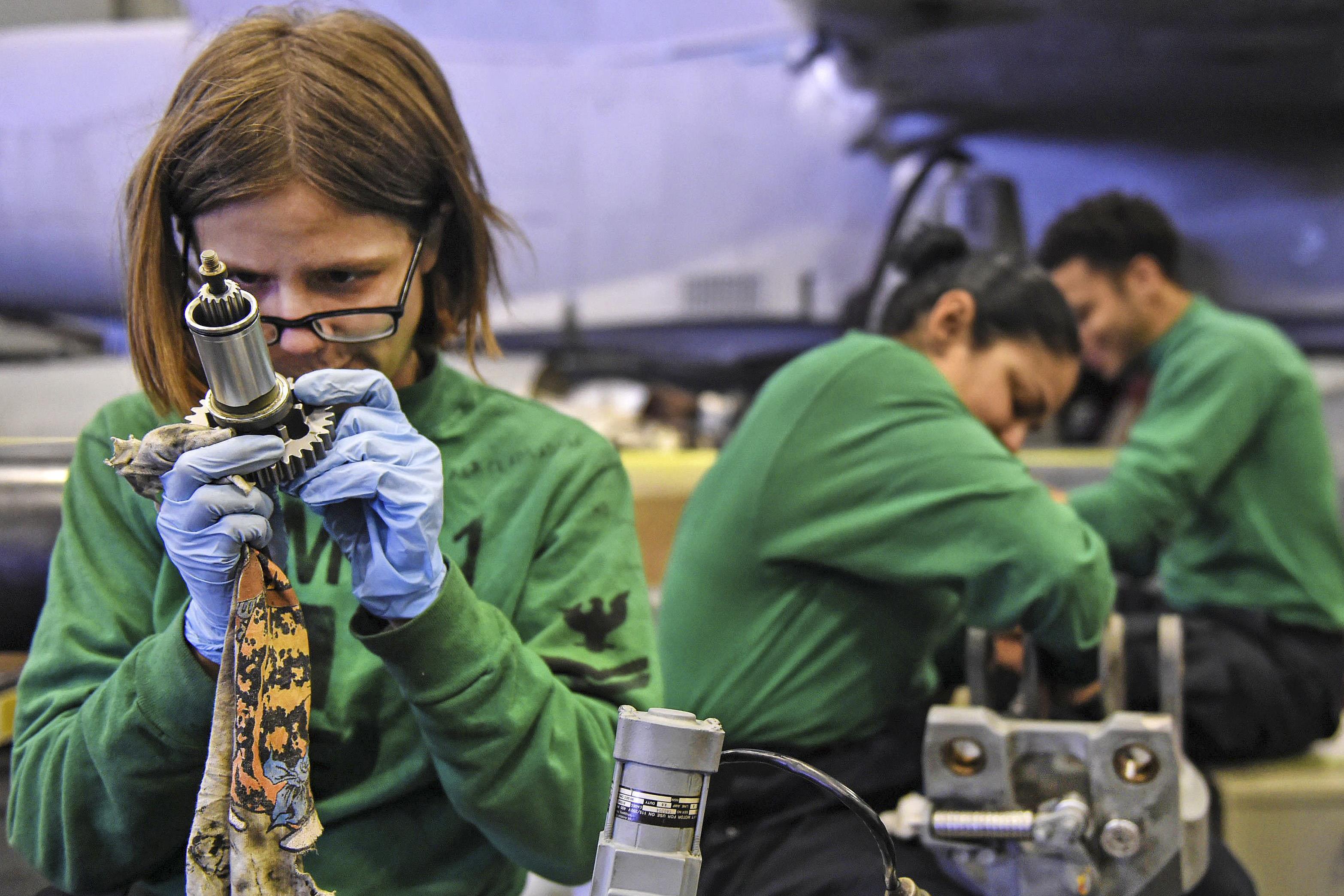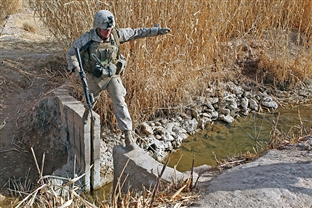
Refuge, by Bartholomew Albert Crowe, presented at the CreatiVets 5 Year Celebration. Photo by Will Parker.
There are many paths to the top of the mountain, but the view is the same – Chinese Proverb
As a young Staff Sergeant in Germany, I had a respected leader tell me: “I don’t care how you skin a rabbit, as long as I get something to eat.” I was explaining to her how I was going to solve a particular problem that she had presented me with. To her, the “how” didn’t matter, only that the end result was accomplished. In many ways, I feel the same way about veteran mental health: it doesn’t matter how we arrive at a place of psychological health and wellness, only that we get there. One of the ways to get there is through creative arts and artistic expression.
As I’ve often said before, veterans don’t need that much of an excuse to avoid “therapy” in the traditional sense. Regardless of how effective it might be, it won’t work at all if someone doesn’t take a chance with it. Often, when someone does take a chance and connect with a mental health professional, it’s just before, during, or right after a crisis. If I were a medical doctor, I’d be an emergency room doc; the clients who come to see me bleeding from a thousand cuts from years of sucking it up and driving on. Creative arts, in any form, can be and is proven to be a way to translate that process. Many times, there is a barrier between me and the veteran; engaging in creative arts can serve as a waypoint, a gateway on the path to wellness.
Creative Arts as a Gateway
When it comes to healing, we can get there in hundreds of different ways. It doesn’t always have to happen in a therapist’s office; it doesn’t really happen there, anyway. The healing happens in our brains, our minds, our lives. It happens through relationships, and it absolutely starts with awareness. The goal of all of this is not to get a veteran into a mental health counselor’s office; the goal of all this is to bring about mental health and wellness in post-military life, however that happens. It should certainly be clinically informed, and clinically supported; without a mental health professional involved in some way, things can go wrong very quickly for everyone involved. With support, however, creativity is certainly a way to get to a place of peace in post military life. It has been proven to be a gateway to healing, a way to get the conversation started.
Creative Arts As Interpretation
One of the challenges when it comes to talking about things that happened in the past is finding the words to describe it. Even before PTSD became an official diagnosis, one study found that clinicians observed that “art expression could be useful in the treatment of trauma, particularly for individuals who were unable to communicate their experiences with words alone.” Creativity can help a veteran sort through that jumbled mess and make some sense of it. And having that mess inside of us doesn’t make us broken, or weak…it makes us human. Everyone has a jumbled mess inside; those who served in the military, and especially those who served in combat, just have different elements to that mess. Creativity, in any form…sculpture, song, painting, graphic design, movement, cooking, you name it…can help the veteran interpret what they feel, what they see inside, but what they don’t have words for.
Creative Arts as Translator
One of the most interesting aspects of creative arts is the ability for the observer to share the experience with the artist, while simultaneously having an entirely different experience. There is meaning behind all art, what the artist intended for the creativity to express. Sometimes the end result isn’t even the most important thing about the art; as friend and colleague Richard Casper of CreatiVets said recently,
“It’s not about the end result, but the process of getting there that’s important” Richard Casper @CreatiVets1 #MHSummitCOSpgs18 pic.twitter.com/NoSBxQzqoa
— Duane K. L. France (@ThCounselingVet) August 29, 2018
The “getting there” is the psychological alchemy through which the thoughts and emotions in a veteran’s mind are translated into observable form, then the interpretation of the thing observed. An example: Richard had given me a copy of some songs that his organization helped veterans write. You can find more of them here, but take a few minutes to listen to this:
https://soundcloud.com/creativets/nasiriyah
Great song, impactful lyrics. If you served in the military, and especially if you served in combat, it can be a hard hitting gut punch. After hearing Richard speak, however, and giving the audience a look at the meaning behind the song, I listened to it again with completely new ears. It took on entirely different meaning, to me the listener. It was good before, it was good after, but it was different. Translated. Interpreted. Art has the power to do that; move the artist, move the audience, move the world.
One last example. Take a look again at the piece of art at the top of this post. What you observed about it, maybe it was interesting. Maybe it didn’t catch your eye. Look at it now with the description from the artist:

Refuge, by Bartholomew Albert Crowe, presented at the CreatiVets 5 Year Celebration. Photo by Will Parker.
The veteran who created this piece finds refuge in their closet. In the middle of the night, in a grip of nightmares, the bed is in disarray and he retreats into his closet, because that’s the place that reminds him of the one of the safest places in the most dangerous time of his life. Could he talk about it before showing it to you? Could you talk about what you feel without having the words?
Art is a gateway, and art is whatever you make it. Words are my art, certainly, and a critical part of my therapy. This expression, any expression, is what gets the stuff out of our heads and into the world. And that’s not a bad thing.
If you want to learn more about creative arts and healing, I highly recommend that you check out these resources:
CreatiVets, a 501(c)3 nonprofit that uses various forms of art, including songwriting, visual arts, music and creative writing, to help disabled veterans cope with service-related trauma by fostering self-expression in a way that allows them to transform their stories of trauma and struggle into an art form that can inspire and motivate continued healing.
Creative Forces Military Healing Arts Network, a joint collaboration between the National Endowment for the Arts, the Departments of Defense and Veterans Affairs, and state arts agencies, Creative Forces is a network of caring people who believe in the transformative and restorative powers of art.
National Veterans Creative Arts Competition, Co-presented by the Department of Veterans Affairs and the American Legion Auxiliary, the National Veterans Creative Arts Festival (NVCAF) is the celebration and grand finale stage show and art and writing exhibitions which are the culmination of talent competitions in art, creative writing, dance, drama and music for Veterans treated in the Department of Veterans Affairs (VA) national health care system.

The Head Space and Timing Blog is supported by the Colorado Veterans Health and Wellness Agency, a 501(c)3 Nonprofit in Colorado Springs, Colorado. The goal of the CVHWA is to provide military culturally competent mental health counseling to veterans and their spouses, regardless of characterization of discharge, time of service, or era of service. Our vision is to assist veterans to identify and remove barriers to their mental, physical, emotional, and behavioral wellness. For questions or inquiries, contact us!


